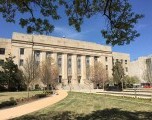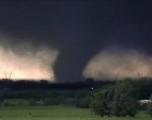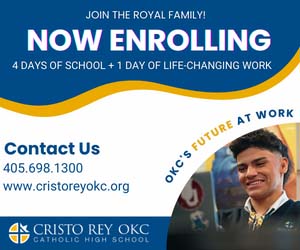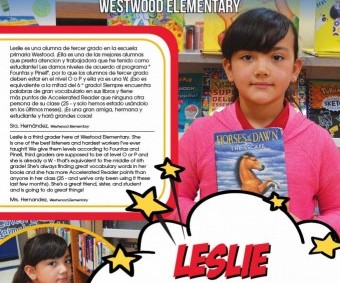HISTORICALLY SPEAKING CURRENT EVENTS THROUGH A HISTORICAL LENS DR. JAMES FINCK, USAO HISTORY PROFESSOR

HISTORICALLY SPEAKING CURRENT EVENTS THROUGH A
HISTORICAL LENS DR. JAMES FINCK, USAO HISTORY PROFESSOR
This week I do not have a clever opening. America is in pain and especially our black brothers and sisters. This is an understandable pain, especially when seen through the lens of American history. Their pain goes back over the past four centuries, but if we focus on just the last one, maybe we can learn a lesson from the past and also try to understand the reaction.
When I teach my classes on the Middle East, I spend a great deal of time explaining to my students that there is no justification for terrorism. However, if we spend some time trying to understand the history of these countries, perhaps we can understand why so many feel the need to commit such acts. Once we understand, we can work towards a solution. The same holds true with the current protests in our cities. First, I want to note that I believe most of the violence is from a small group of people who are not trying to make a difference but simply want violence for violence's sake. Yet, even among the majority, there is enough anger to cause harm.
The history of the 20th and 21st centuries is one of violence against black Americans. As early as 1906, a riot broke out in Little Rock, Arkansas, after a retired policeman killed a black musician. The next day, as a group of mourners tried to enter the funeral home, they were stopped by a policeman. When a scuffle began, the owner of the funeral home was shot and killed. A few days later, the same police officer and his father were shot in front of the funeral home. By the time the violence was over, four men were dead, including the public lynching of a black restaurant owner, and a neighborhood block was burned down.
Literally hundreds of such incidents occurred decade after decade, but the worst of the violence occurred in the years just after WWI. The Great War led to a shift in America as men left to fight the war. Most know that in WW II women jumped in to fill men’s jobs during the war. What is less known is that in WWI black men filled that role. In what became known as the Great Migration, thousands of black families tried to escape the racist conditions of the South and moved to northern industrial cities for work. The problem was that, when whites returned home from the War, they found blacks had taken their jobs. What we find is that the majority of the race riots that occurred in the years after the war were now in northern cities instead of the south where black/white race issues were more traditional.
Some of the soldiers returning home were black soldiers. They too had fought and bled for their nation. They had earned some respect, at least from the French, and had returned home now as soldiers who felt they deserved the same respect from their own nation. Of course, the respect never came, and instead the fact they wanted to be treated as men put off white Americans.
One of the worst of the post war riots came in Chicago in 1919. The violence began when a black teenager named Eugene Williams went to a beach to cool off. At this time Chicago beaches were unofficially segregated. When the current pulled Williams to the white section of the beach, he tried to swim in. Upon seeing a black teenager trying to swim ashore, a white man began to throw rocks at Williams until he either was hit or eventually tired out and drowned. The police refused to arrest the white man for his senseless murder of Williams, leading to violence that caused the death of 38 with another 500 injured and more than 1,000 black families homeless.
The century continued in this light with hundreds of incidents across the country. Some made big headlines, including the 1921 Tulsa Massacre, the 1965 Watts riots, and the 1968 reactions to the death of Martin Luther King. Then, of course, there have been the more modern events, such as the 1992 Rodney King riots, the 2001 Cincinnati riots, and the 2015 Ferguson riots, all because police killed unarmed black men.
I do not have the space to even begin to list them all, but when taken together it is easy to understand the anger. Black Americans have been fighting for the same things for 100 years without seeing improvement. Who among us would show toleration for the loss of life in our families?
Maybe there is a lesson here. I support today's protesters. The incidents of the last few weeks must end. As a society, we cannot tolerate police killing unarmed black men in custody or other citizens shooting black people jogging down the street. But how do we, as a society, actually achieve this?
If we can learn anything from the past on this issue, we can learn that the approach of Dr. King was by far the most effective form of racial change and healing. King did not accept racial inequality and he believed in fighting back. There was nothing soft or weak about the man, but he believed that non-violent civil disobedience was the best way. We also can learn that in his campaigns he had recognizable achievable goals the he hoped one day would lead to his dream of racial equality. With this current crisis we need to come together in our local areas, denounce the violence and destruction, and talk about achievable goals that can end the protests and open the dialog that will work towards the ultimate goal of equality and peace. I was happy to see a list of achievable demands from the NAACP. Locally we can use those as a starting point and model to begin the conversation.
Dr. James Finck is a Professor of History at the University of Science and Arts of Oklahoma and Chair of the Oklahoma Civil War Symposium. Follow Historically Speaking at www.Historicallyspeaking.blog or on Facebook.
Comentar
Los campos obligatorios estan marcados con *

















































Comentar con Facebook